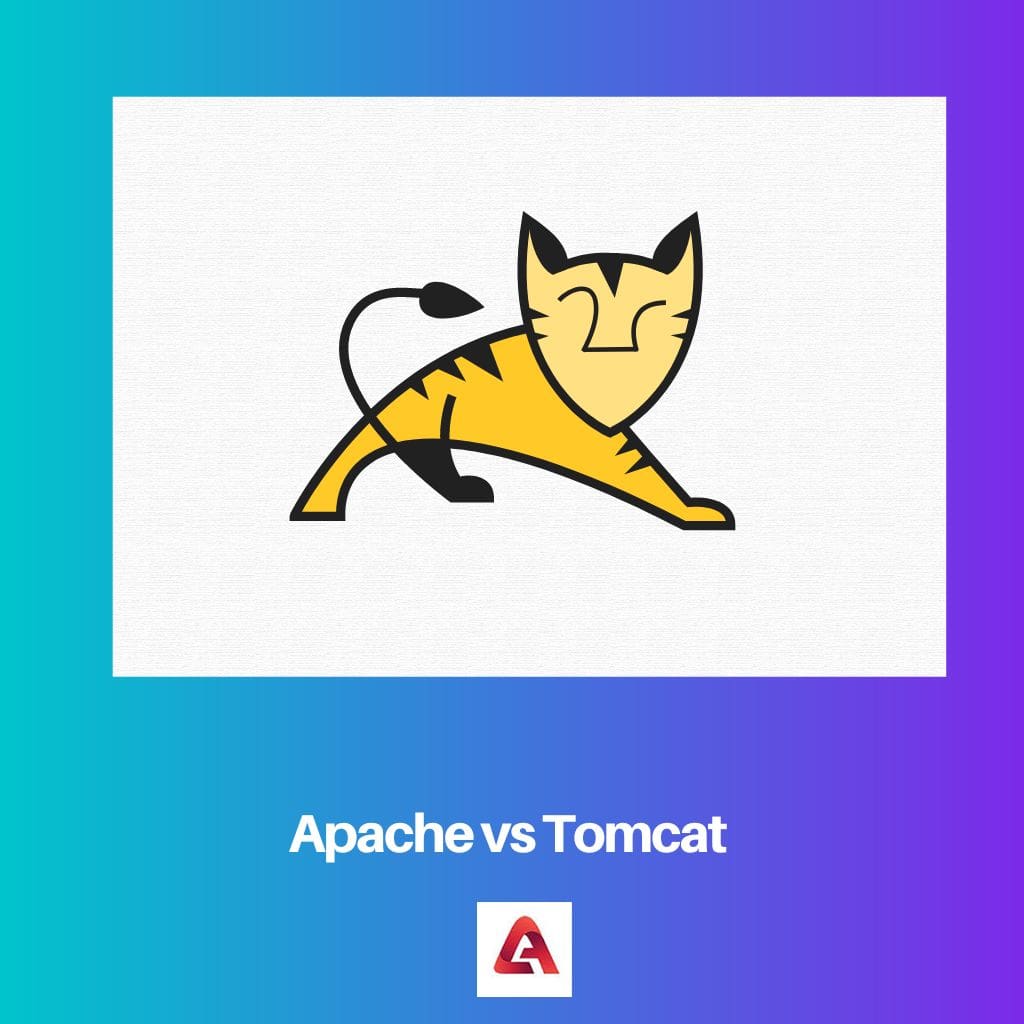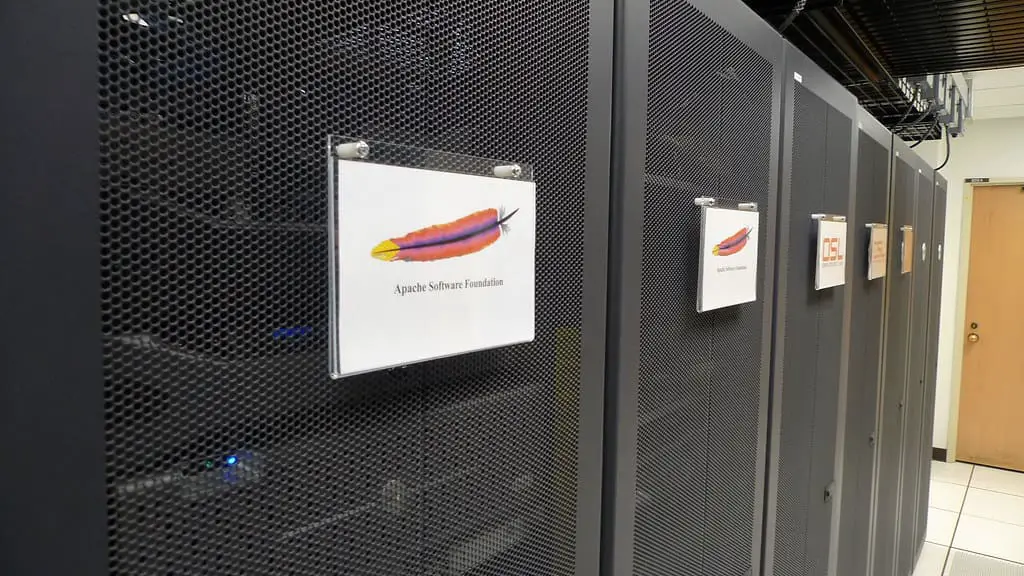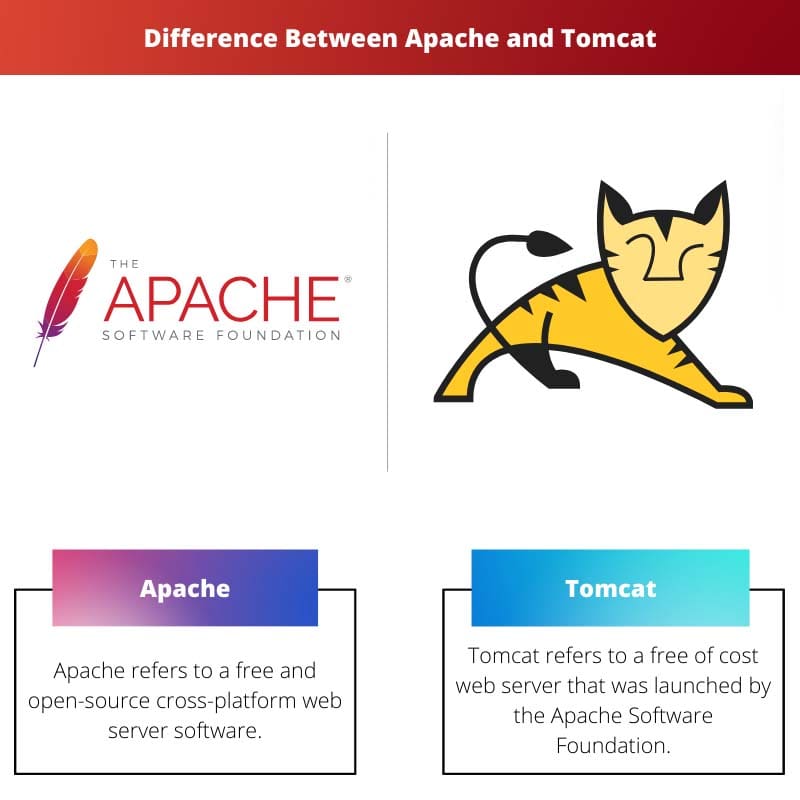Web servers have become an indispensable part of our lives. They seek to assist us in everyday chores and tasks. However, it may be hard to choose the most appropriate web server. Apache and Tomcat are two confusing software from the Apache Software Foundation. Although they may seem similar, they have considerable differences.
Key Takeaways
- Apache is a web server software that serves static content, while Tomcat is a web application server that supports dynamic content.
- Tomcat can execute Java servlets and render web pages with JavaServer Pages (JSP), whereas Apache requires additional modules for such capabilities.
- Apache excels in serving high-traffic volumes, while Tomcat is better suited for Java-based web applications.
Apache vs Tomcat
The difference between Apache and Tomcat is that Apache software serves to provide static content to its users. In contrast, the purpose of Tomcat is to provide dynamic content to the users. Apache software uses C and XML languages. On the other hand, the language used in Tomcat is Java.

Apache refers to free and open-source cross-platform web server software. The founder of Apache is the Apache Software Foundation. Moreover, it provides loadable dynamic modules, name and IP-address-based virtual servers, and HTTP/2 support. In addition, Apache is highly scalable and offers multiple request-processing modes.
Tomcat is a free-of-cost web server launched by the Apache Software Foundation in 1999. The language used in Tomcat is Java. Initially, Tomcat served as a servlet reference implementation. The founder of the web server was James Duncan Davidson. Apache Tomcat is in the procedure of building additional components.
Comparison Table
| Parameters of Comparison | Apache | Tomcat |
|---|---|---|
| Definition | Apache refers to a free and open-source cross-platform web server software. | Tomcat refers to a free of cost web server that was launched by the Apache Software Foundation |
| Year of Origin | 1995 | 1999 |
| Language Used | Apache software is written in C, and XML languages. | The language used in Tomcat is Java. |
| Purpose | The main purpose of Apache is to provide static content to the users. | The main purpose of Tomcat is to provide dynamic content to the users. |
| Main Competitors | The main competitor of Apache web server is Nginx HTTP server, and Lighttpd. | The main competitor of Tomcat web server is Red Hat’s JBoss, and Jetty. |
What is Apache?
Apache refers to free and open-source cross-platform web server software. The founder of Apache is the Apache Software Foundation. The initial release year of Apache is 1995. Apache software uses C and XML languages. A significant proportion of the Apache HTTP Server instances operate on a Linux distribution.
The major systems that Apache operates on are Windows, Linux, Unix-like, and Open VMS. Apache webserver offers several features. It provides loadable dynamic modules, name and IP-address-based virtual servers, and HTTP/2 support. In addition, Apache is highly scalable and offers multiple request-processing modes.
Apache servers enable users to handle static files, auto-indexing, index files, and content negotiation. It is IPv6 compatible and has fine-grained authentication along with authorization access control. It allows users to rewrite URLs and provides user and session tracking, CGI support, and headers, and content rewriting.
Another peculiar feature of Apache is the provision of real-time status views. Apache servers provide users with an array of multi-processing modules. In addition, it allows the implementation of either a process-based mode, a hybrid model, or an event-hybrid mode. The Apache server has the Apache 2.0 license.

What is Tomcat?
Tomcat is a free-of-cost web server launched by the Apache Software Foundation in 1999. The language used in Tomcat is Java. A peculiar feature of Apache Tomcat is the provision of a pure Java HTTP server. The Tomcat server has been licensed to the Apache 2.0 license. The Tomcat server has three components: Catalina, Coyote, and Jasper.
Cataline performs the role of Tomcat’s servlet container. Coyote, on the other hand, serves as the connector component of the server. In addition, Jasper is the JSP engine of Apache Tomcat. The cluster has been an addition to the components of Tomcat. It serves the purpose of managing large applications by facilitating a load-balancing system.
A high availability feature has been a recent introduction to the software. It serves as a means to schedule the system upgrades without causing any disturbances in the current environment. Another peculiar feature is the web application, which has supported developmental activities across various environments.
Initially, Tomcat served as a servlet reference implementation. The founder of the web server was James Duncan Davidson. Apache Tomcat is in the procedure of building additional components. Furthermore, users may have the provision to build these servers or to download them from the options available. Thus, Apache Tomcat serves to cater to changing needs and demands.
Main Differences Between Apache and Tomcat
- Apache refers to free and open-source cross-platform web server software. In contrast, Tomcat refers to a free-of-cost web server launched by the Apache Software Foundation.
- Apache came into existence in 1995. On the other hand, Tomcat came into existence in 1999.
- Apache software uses C and XML languages. On the other hand, the language used in Tomcat is Java.
- The purpose of Apache is to provide static content to users. In contrast, Tomcat aims to provide dynamic content to the users.
- The main competitor of the Apache web server is the Nginx HTTP server and Lighttpd. On the other hand, the main competitor of the Tomcat web server is Red Hat’s JBoss and Jetty.

- https://books.google.com/books?hl=en&lr=&id=1z6QfgsnpKsC&oi=fnd&pg=PT5&dq=apache+server&ots=4xMrvsfd_9&sig=AXerCKT2rNHf9V0Enzf739y41WE
- https://books.google.com/books?hl=en&lr=&id=vJttHyVF0SUC&oi=fnd&pg=PR3&dq=tomcat+server&ots=i26yzSrMeW&sig=iOJwJ6SCwtQejeYyzwGvefV1NRM

The article not only showed what these servers do but also their emergence and significance. Very helpful.
Truly an informative read. The literature is well presented and straightforward. It is commendable.
Indeed, the simplicity and clarity of the content make it very effective at educating the user.
This comparison table simplifies understanding the core differences between Apache and Tomcat.
The article brilliantly highlights the purposes and the competencies of Apache and Tomcat. Great read!
Great article. The specific comparison between Apache and Tomcat was much needed for a lot of us.
The differences are quite detailed and clear. The article helps in understanding the functions of Apache and Tomcat.
Very nice article. It is extremely informative and puts things into perspective clearly.
Indeed, I couldn’t agree more. It’s great the writer has done such an indepth study on this topic.
Thank you for this article. I appreciate how in depth it goes to explain the features and peculiarities of Apache and Tomcat.
I agree. This article is beneficial even for those with a deep understanding of web servers.